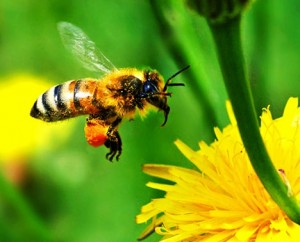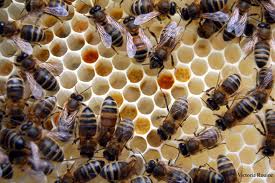 Honey bees (or honeybees) are a subset of bees in the genus
Apis.
This group is primarily distinguished by the fact that they produce and store honey and construct perennial nests from wax. There are currently only seven recognised species of honey bee with a total of 44 subspecies, though historically, anywhere from six to eleven species have been recognised. Honey bees represent only a small fraction of the approximately 20,000 known species of bees. Some other types of related bees produce and store some honey, but only members of the genus
Apis
are said to be true honey bees.
Honey bees (or honeybees) are a subset of bees in the genus
Apis.
This group is primarily distinguished by the fact that they produce and store honey and construct perennial nests from wax. There are currently only seven recognised species of honey bee with a total of 44 subspecies, though historically, anywhere from six to eleven species have been recognised. Honey bees represent only a small fraction of the approximately 20,000 known species of bees. Some other types of related bees produce and store some honey, but only members of the genus
Apis
are said to be true honey bees.
Of these it is Apis mellifera which is mostly kept and bred by beekeepers worldwide. It seems to have originated in eastern tropical Africa and spread from there to Northern Europe and then eastwards into Asia. It is variously called the European, Western or Common honey bee in different parts of the world.
The genus Apis is Latin for bee, and mellifera comes from Latin melli - honey and ferre - to bear, meaning honey-bearing bee. The name was first used in 1758 by Carl Linnaeus who, subsequently realising that bees do not bear honey but nectar, tried unsuccessfully to correct it to Apis mellifica (honey-making bee) in a subsequent publication.
The European honey bee is by far the most widespread domesticated bee and the only species kept in North America and the UK. There are many races of the European honey bee, the most popular with modern beekeepers being the Italian, Carniolan and the Caucasian. Most honey bees kept in hives today are invariably a mixture of these, hence the reason why honey bees can differ so much in colour, even sometimes within the same hive (where they may have different fathers). In addition many hybrid strains have been bred such as the Buckfast and the Hygienic Bee, to try and bring out certain disease resistant qualities.
In addition to Apis Mellifera there is Apis dorsata or the giant honey bee, which is native and widespread across most of South and Southeast Asia. These can be fierce and can if provoked in numbers sting humans to death. They usually build their nests on high tree limbs or on cliffs. These are the bees that we are familiar with as a result of watching film footage in the West depicting the skills of the native human “honey hunters”. Apis dorsata should not be confused with Africanised bees or ‘Killer Bees’ the latter being a hybrid bred in a South American lab and accidentally released into nature.
In addition Apis florea and Apis andreniformis are small honey bees, which build small nests in trees and shrubs and are found in southern and south-eastern Asia. There are also the reddish Koschevnikov’s bee Apis koschevnikovi from Borneo which often inter-breeds with Apis cerana , the traditional honey bee of southern and eastern Asia. Apis cerana is kept in hives in a similar way to Apis mellifera , albeit on a much smaller scale. One more worth mentioning is Apis nigrocincta which is found in the the Philippines and parts of Indonesia and is very similar in genetic makeup to Apis cerana.
Further reading….
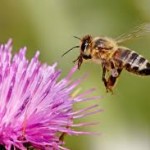
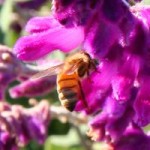
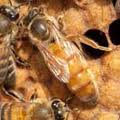
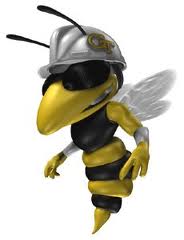
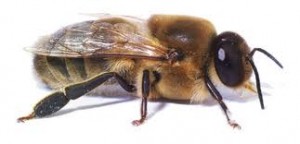
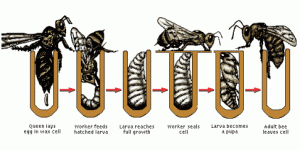
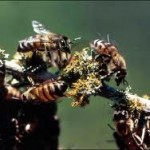
Killer Bees or Africanized Bees
